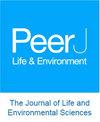在种植甜叶菊时,砂壤土比粘土能保持更好的理化参数和更丰富的有益微生物群
IF 2.3
3区 生物学
Q2 MULTIDISCIPLINARY SCIENCES
引用次数: 0
摘要
不同的土壤质地会有不同的物理化学和微生物参数,而这些特性又会受到作物栽培的影响。甜叶菊是一种广受欢迎的零热量甜味剂作物,在世界各地的不同土壤质地上广泛种植。砂壤土和粘壤土在物理化学和生物参数方面存在很大差异,通常用于种植甜叶菊。为了了解种植甜叶菊对土壤理化和生物特征的影响,我们研究了种植甜叶菊后沙壤土和粘壤土理化和微生物参数的变化。这项研究是通过不同的生理生化测定和微生物组学分析进行的。结果表明,种植甜叶菊后,沙质壤土的 pH 值明显降低,根瘤菌层和大体积土壤中的养分含量较高。在甜叶菊收获后,沙质壤土的细菌多样性和丰富度均高于粘质土壤。沙壤土中富含 Dongia、SWB02、Chryseolinea、Bryobacter 和 Devosia 等有益细菌;而粘土中则主要富含 RB41、Haliangium 和 Ramlibacter 等不利于养分积累的细菌。冗余分析表明,细菌群落组成的变化主要受土壤 pH 值、有机质、全氮、可利用磷和微生物生物量磷的影响。这项研究有助于深入了解甜叶菊种植后不同土壤质地的物理化学和微生物变化,并为甜叶菊轮作种植的肥料管理提供指导。本文章由计算机程序翻译,如有差异,请以英文原文为准。
Sandy loam soil maintains better physicochemical parameters and more abundant beneficial microbiomes than clay soil in Stevia rebaudiana cultivation
Depending on the texture of soil, different physicochemical and microbiological parameters are characterized, and these characteristics are influenced by crop cultivation. Stevia, a popular zero-calorie sweetener crop, is widely cultivated around the world on various soil textures. Sandy loam and clay soil show great differences in physicochemical and biological parameters and are often used for Stevia cultivation. To understand the effects of Stevia cultivation on soil physicochemical and biological features, we investigated the changes of physicochemical and microbiological parameters in sandy loam and clay soil following Stevia cultivation. This study was carried out through different physiological and biochemical assays and microbiomic analysis. The results indicated that the sandy loam soil had significantly lower pH and higher nutrient content in the rhizosphere and bulk soils after the Stevia cultivation. The sandy loam soil maintained higher bacterial diversity and richness than the clay soil after Stevia harvest. Beneficial bacteria such as Dongia, SWB02, Chryseolinea, Bryobacter and Devosia were enriched in the sandy loam soil; however, bacteria such as RB41, Haliangium and Ramlibacter, which are unfavorable for nutrient accumulation, predominated in clay soil. Redundancy analysis indicated that the variation in the composition of bacterial community was mainly driven by soil pH, organic matter, total nitrogen, available phosphorus, and microbial biomass phosphorus. This study provides a deeper understanding of physicochemical and microbiological changes in different soil textures after Stevia cultivation and guidance on fertilizer management for Stevia rotational cultivation.
求助全文
通过发布文献求助,成功后即可免费获取论文全文。
去求助
来源期刊

PeerJ
MULTIDISCIPLINARY SCIENCES-
CiteScore
4.70
自引率
3.70%
发文量
1665
审稿时长
10 weeks
期刊介绍:
PeerJ is an open access peer-reviewed scientific journal covering research in the biological and medical sciences. At PeerJ, authors take out a lifetime publication plan (for as little as $99) which allows them to publish articles in the journal for free, forever. PeerJ has 5 Nobel Prize Winners on the Board; they have won several industry and media awards; and they are widely recognized as being one of the most interesting recent developments in academic publishing.
 求助内容:
求助内容: 应助结果提醒方式:
应助结果提醒方式:


